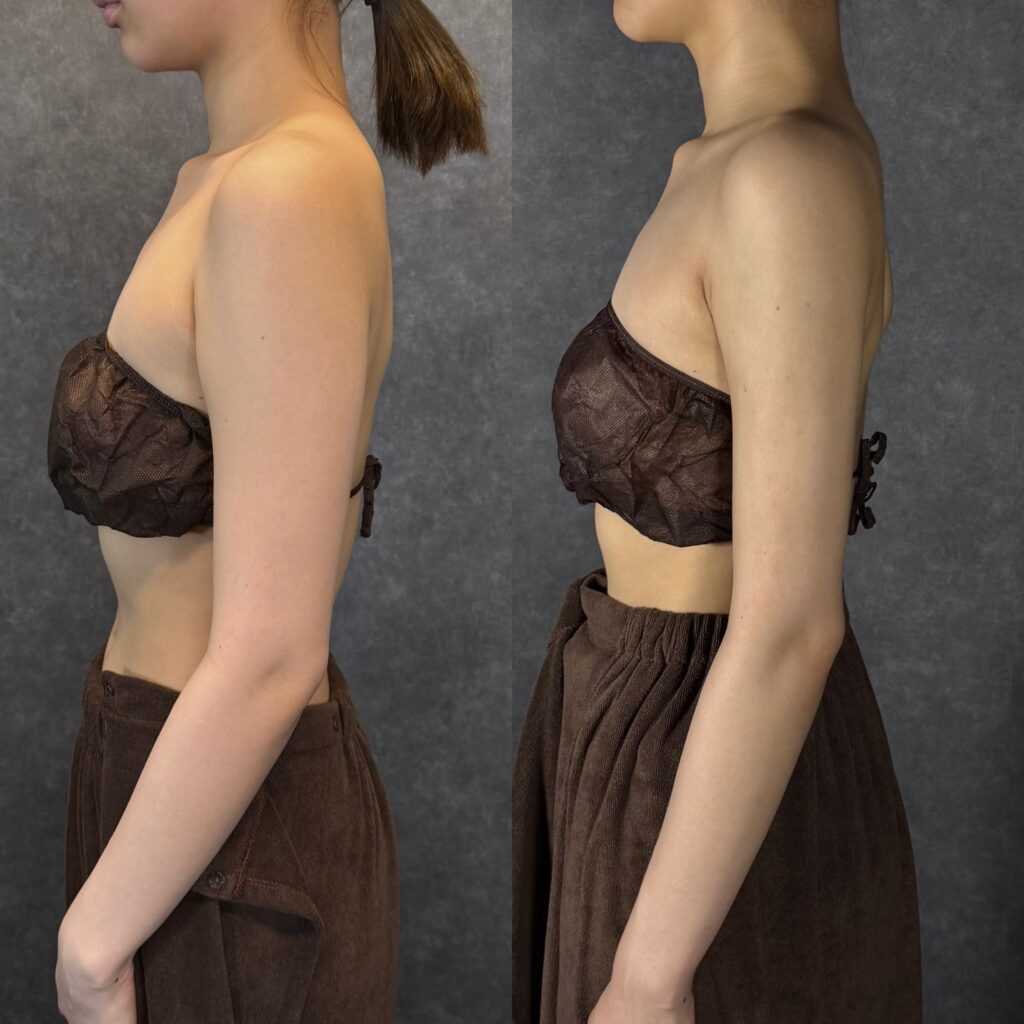How to Minimize Risks When Aiming for “Ultra-Slim” Results with Liposuction2025.10.04
Some patients request that we remove as much fat as possible to achieve an “ultra-slim” or karikari look. While this can create dramatic changes, removing fat from very superficial layers carries significant risks—such as skin irregularities, pigmentation changes, and circulation problems.
At AVAN TOKYO Ginza Liposuction Clinic, we believe it is possible to balance safety and results when proper planning and techniques are applied. Below, we explain the precautions we take before, during, and after surgery.
Preoperative Preparation
- Achieve a lean baseline weight
Ideally, BMI under 19. As a guideline, safe extraction volumes are:
- Arms: ≤ 500cc pure fat
- Thighs: ≤ 1500cc
- Abdomen/Waist: ≤ 1000cc
- Stop smoking
Nicotine reduces blood flow and increases risk of poor healing and pigmentation.
Intraoperative Techniques
- Identify high-risk zones
Areas like the inner thighs, underarm fold, and side abdomen are more prone to complications. - Refined cannula handling
The cannula should not be directed toward the skin surface; feathering should be performed lightly and only as needed. - Balanced, circumferential removal
Removing fat evenly around the entire circumference helps avoid contour irregularities.
Postoperative Care
- No smoking
This is absolutely critical to reduce risks. - Sun protection
Prevents worsening of postoperative pigmentation. - Nutrition
A diet rich in amino acids, zinc, protein, and vitamins supports healing. - Moisturizing and skin care
Hydrated skin heals more smoothly. - Proper compression garments
Avoid overly tight garments, which may impair circulation.
Example Case
One patient underwent 360° arm liposuction combined with thread lift. Although only 300cc of fat was removed (a small volume due to her lean build), precise superficial liposuction created a slim, straight arm line without irregularities. Her slim body type also reduced risks significantly.


Our Philosophy
In the past, I too have experienced cases where removing too much from the superficial layer damaged small blood vessels. From this, I learned that sometimes it is safer to leave superficial fat in certain areas, especially when the risk of complications is high.
On the other hand, using “safety concerns” as an excuse for incomplete liposuction is not acceptable. The most important thing is to evaluate each patient carefully, identify the safe limits, and deliver results for those who are suitable candidates.
👉 If you are considering aggressive liposuction, it is essential to consult with a surgeon who can clearly explain both the potential risks and the strategies to reduce them. At AVAN TOKYO, we are committed to providing results-driven, safe, and individualized treatment.



